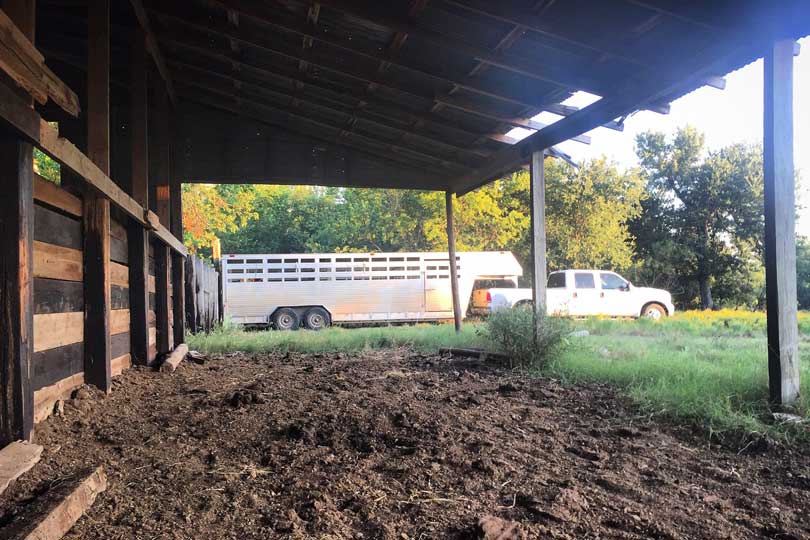By Haley Herzog
TFB Communications Intern
Extreme dry weather and high temperatures have Texas ranchers facing tough decisions, including whether or not to cull their herds.
A shortage of hay and forage could mean ranchers are forced to reduce herd numbers, Texas A&M AgriLife Extension Beef Cattle Specialist Dr. Jason Banta said.
He noted very little hay was carried over from last year, and this year’s drought has affected quantity and quality.
“That means hay supplies will be tight,” he said. “A lot of producers are getting worried, and their concerns are justified.”
About 50 percent of the state is suffering from drought conditions, according to a late July drought report from the Texas Water Development Board.
Manage pastures
Herd sizes have increased over the past several years, but as drought conditions continue to grip much of Texas, ranchers are adjusting their stocking rates.
“The number of beef cattle that should be in a pasture and proper utilization of grass is critical as understocking decreases plant growth and overstocking has a negative effect on the grass,” Dr. Bob Judd, a Hewitt-based veterinarian, said.
Stocking rate is the number of animals on the pasture. Carrying capacity is also critical and is a measure of how much forage a grazing unit has and is able to produce in an average year.
Simply calculating your pasture’s stocking rate by eye can be costly.
“Looking at the waving grass and turning the cows in and then coming back later to adjust the number of cows is not a good idea,” Judd said.
Carrying capacity and stocking rates vary from year to year, depending heavily on weather conditions.
Ranchers can also wean calves earlier to help keep cows in better body condition going into the winter, Banta said.
And if pasture conditions continue to decline, ranchers should consider culling their herds.
Banta noted cows with problems— such as bad udders, feet, eyes or temperament—should be the first to go. Virgin replacement heifers and late calvers should also be options if additional herd reduction is needed.
Manage heat stress
Beef cattle management is heating up along with summer temperatures. Record highs mean ranchers need to take extra precautions to mitigate stress when handling cattle, Dr. Ron Gill said.
“The main thing is just try to get everything done as early in the day as you can, so you don’t elicit the heat stress response in these cattle,” Gill, professor and AgriLife Extension livestock specialist, said.
Being aware and proactive is most important, Gill said, as well as being able to recognize the symptoms of heat stress.
According to Gill, symptoms of heat stress in beef cattle include open mouth breathing, salivation from the mouth, heaving of the stomach and panting.
“Once they get to the point they have to open mouth breathe, they’re certainly in heat stress and need to get to shade and get to water if at all possible,” Gill said in an interview with the TFB Radio Network.
The effects of heat stress can lead to many harmful damages and impacts on beef cattle.
“Anytime you stress one physiologically, it’ll alter their immune system function and everything else, because it just goes to competing for energy in the body. It creates a very stressful environment in the body, and I think that’s why they basically just shut down if they can’t dissipate enough heat,” Gill said.
When beef cattle aren’t able to dissipate their heat, it can cause internal and external issues for the animal, and sometimes those can result in loss of life.
“If they can’t dissipate enough heat, it overwhelms the whole system, and they will die,” Gill said. “Other issues would be early embryonic death. Two or three months bred, it won’t be an issue. But if they’re in the middle of breeding season, there can be some embryonic death loss or early fetal reabsorption, perhaps.”
Certain beef cattle characteristics, such as weight and color, can also lead to quicker, more extreme heat stress.
“The heavier and fatter an animal is, the more heat they tend to generate,” Gill said. “All cattle can get hot. I think that’s why in the southern states we don’t see a lot of black hided cattle unless they have Brahman influence in them. Those cattle can dissipate heat quicker than Angus

